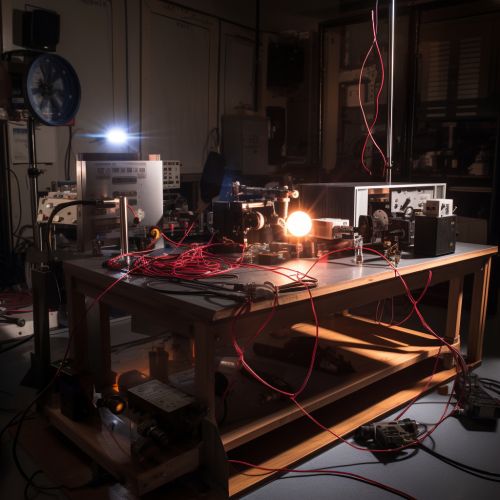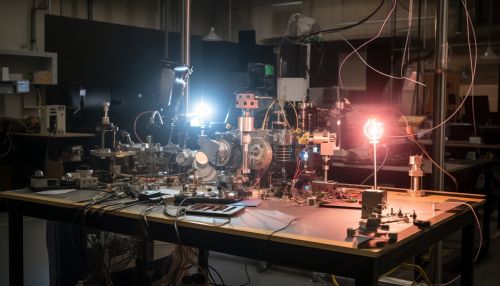Bell's Theorem
Introduction
Bell's theorem is a fundamental proposition in quantum mechanics that distinguishes quantum theory from classical mechanics. The theorem, named after physicist John S. Bell, demonstrates the impossibility of hidden variable theories that are both local and deterministic. It is a cornerstone in the understanding of quantum entanglement and the nature of reality.


Background
Bell's theorem was first published in 1964 by John S. Bell, a physicist working at CERN (European Organization for Nuclear Research). Bell was inspired by a 1935 paper by Albert Einstein, Boris Podolsky, and Nathan Rosen, collectively known as EPR, that questioned the completeness of quantum mechanics. The EPR paper proposed a thought experiment, now known as the EPR paradox, which seemed to suggest that quantum mechanics was incomplete and required the existence of "hidden variables" to fully explain the behavior of quantum systems.
The Theorem
Bell's theorem is a no-go theorem, which means it demonstrates that a particular condition or assumption leads to a contradiction. Specifically, Bell's theorem shows that any physical theory that incorporates local realism – the idea that physical processes occurring at one location do not depend on the properties of objects at other locations – cannot reproduce all the predictions of quantum mechanics.
The theorem is based on the concept of quantum entanglement, a phenomenon in which particles become interconnected such that the state of one particle is immediately connected to the state of the other, no matter the distance between them. This phenomenon was described by Einstein as "spooky action at a distance".
Bell's theorem is often expressed in terms of an inequality, known as Bell's inequality. This inequality is a mathematical expression that must be satisfied by any local hidden variable theory. However, quantum mechanics predicts that under certain conditions, this inequality can be violated. This violation has been confirmed in numerous experiments, providing strong evidence for the validity of quantum mechanics and the non-local nature of quantum entanglement.
Implications
The implications of Bell's theorem are profound and far-reaching. It challenges the classical worldview that physical processes are local and deterministic, suggesting instead a universe that is fundamentally interconnected and probabilistic.
The theorem has significant implications for the interpretation of quantum mechanics, particularly the Copenhagen interpretation and the many-worlds interpretation. The Copenhagen interpretation, which posits that a quantum system remains in superposition until it interacts with, or is observed by the external world, seems to conflict with the locality principle. On the other hand, the many-worlds interpretation, which suggests that all possible alternate histories and futures are real, appears to be in line with the non-locality suggested by Bell's theorem.
Furthermore, Bell's theorem has implications for the field of quantum information, including quantum computing and quantum cryptography. The non-locality of quantum entanglement, as confirmed by Bell's theorem, is a key resource in these technologies.
Experimental Tests
Since the publication of Bell's theorem, numerous experiments have been conducted to test its predictions. These experiments generally involve measuring the properties of entangled particles in different directions and checking whether the results violate Bell's inequality.
The first of these experiments was performed by physicists John Clauser, Michael Horne, Abner Shimony, and Richard Holt, now referred to as the CHSH experiment. Their results provided strong evidence for the violation of Bell's inequality, supporting the predictions of quantum mechanics.
Subsequent experiments have refined the methodology and addressed various "loopholes" that could potentially explain the results without violating local realism. The most significant of these is the loophole-free Bell test, which addresses all major loopholes and provides the most robust evidence to date for the violation of Bell's inequality.
Conclusion
Bell's theorem has fundamentally reshaped our understanding of the physical world. It has challenged the classical worldview and provided a robust foundation for the counterintuitive predictions of quantum mechanics. Despite its profound implications, the theorem remains a topic of active research and discussion in the scientific community.
